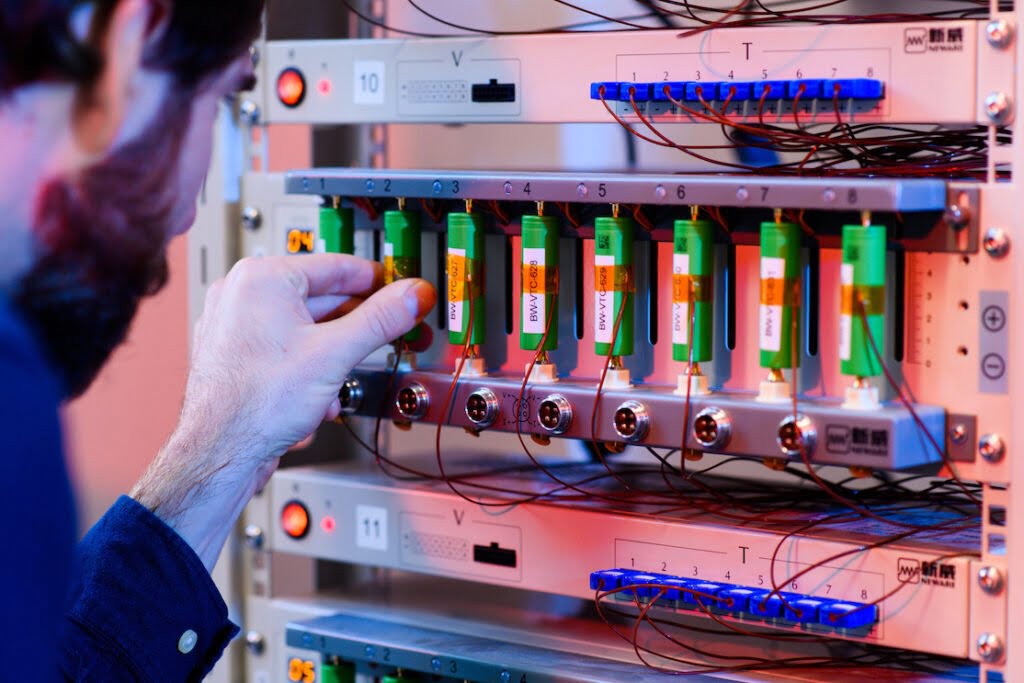Field’s founder Amit Gudka. Image: Field.
News in brief from around the world in energy storage, this time from the UK grid-scale market.
Bulb founder’s ESS venture raises financing for 110MW pipeline
Battery energy storage company Field is to build a portfolio of four assets across the UK, after securing financing from investment firm Triple Point Energy Efficiency Infrastructure Company (TEEC).
TEEC announced today that it will provide Field with a debt facility totalling £45.6 million (US$59.9 million) that will allow the company to construct the 110MW portfolio of battery energy storage systems (BESS).
The first asset is located in the north of England and is expected to become operational this June, with a capacity of 20MW and a one-hour duration battery.
This will be followed by a 50MW BESS in Scotland and a 20MW asset in Wales, which will both have two-hour duration batteries, and a one-hour 20MW battery installation in southeast England. These three are scheduled to begin operations next year.
TEEC said the funding will take place once the projects are each sufficiently de-risked against construction and operational risks.
Launched by energy supplier Bulb’s co-founder Amit Gudka in early 2021, Field – initially called Virmati Energy – is focusing on developing a portfolio of BESS assets in the UK.
Story by Jules Scully.
This story first appeared on Solar Power Portal.
Investor-developer Gore Street targets fundraise for UK and international expansion
Gore Street Energy Storage Fund is looking to raise £75 million (US$98.48 million) via the issue of 68,181,818 new ordinary shares to fund the acquisition and construction of a new pipeline.
These would be priced at 110p per ordinary share by way of an initial placing, initial offer for subscription and initial intermediaries offer. This initial issue could be upscaled subject to demand, however, the company said, to a maximum of 136,363,636 ordinary shares.
The net proceeds of the issue are to be used to acquire and construct new projects in the company’s pipeline, with its Investment Manager having identified a pipeline of investments with a total project size of over 1.3GW in the UK and internationally.
This includes a number of potential projects comprising 900MW of UK grid-scale projects, 375MW in North America and 100MW in Europe.
The initial issue was announced earlier this month, though no concrete detail was given at the time. This proposed fundraise is conditional on shareholder approval at a general meeting on 11 April 2022, among other things, the company said.
Story by Alice Grundy.
To read the full version of this story, visit Solar Power Portal, where it first appeared.
Santander funding pushes 99MWh Megapack project off starting block
Construction has commenced on a 49.5MW/99MWh UK grid-scale standalone energy storage system following new funding from Santander UK.
The £30 million Chapel Farm battery energy storage system (BESS) development is a joint venture between TagEnergy and Harmony Energy, with TagEnergy having acquired a 60% stake in the project in November 2021.
Santander UK, meanwhile, is providing £12.5 million in funding to the project.
The Chapel Farm project is to use a system of Tesla Megapack lithium-ion batteries together with Tesla’s Autobidder AI software for real-time trading and control.
The BESS is expected to be operational in Q1 2023, with renewable energy firm RES as asset manager.
Story by Alice Grundy.
To read the full version of this story, visit Solar Power Portal, where it first appeared.
Shell-owned Limejump gets 90MW optimisation deal
Clean energy management tech company Limejump has announced a new partnership with Opium Power, a developer owned by South Somerset District Council in southern England, to optimise 90MW of battery energy storage assets.
This will include the asset owner’s 40MW Fareham Battery Energy Storage System (BESS) in Hampshire – the UK’s largest local authority owned battery – and 30MW Fideoak Mill BESS, near Taunton in Somerset. A further 20MW of BESS is set to go live at Fareham over the summer.
Limejump will begin to optimise the Fareham asset in National Grid ESO’s Dynamic Containment market from April 2022, as well as wholesale power and ancillary service markets.
Fideoak Mill has been operational since 2020, and Limejump took over optimisation of the site in late 2021. It plays into a number of markets including stacking Dynamic Containment with wholesale trades.
Story by Molly Lempriere
To read the full version of this story, visit Current±, where it first appeared.
Continue reading










